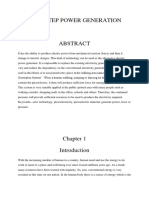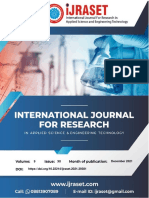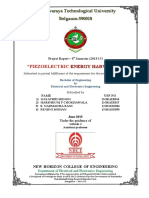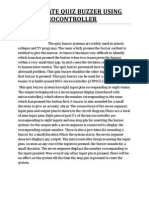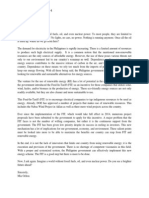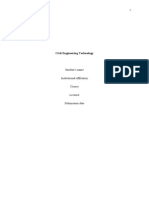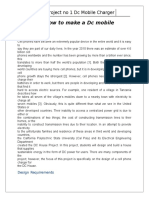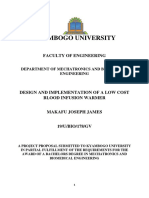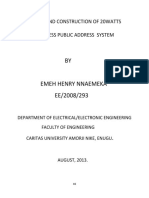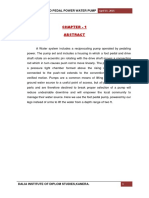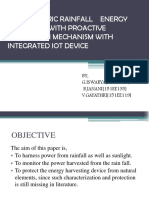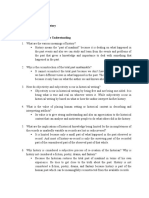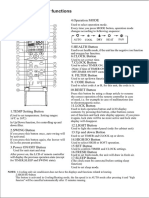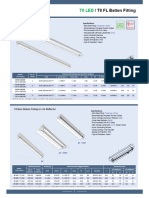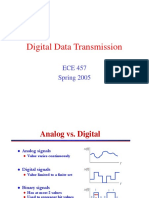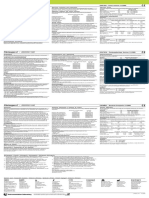0% found this document useful (0 votes)
197 views31 pagesRaindrop Energy Harvesting Study
This document provides an overview of a study that aims to design and implement a raindrop energy harvesting system using piezoelectric transducers. Specifically, it seeks to determine the efficiency of using different types of piezoelectric transducers in harvesting raindrop kinetic energy and whether the amount of energy harvested is enough to generate electricity. The study will design an umbrella-like structure containing piezoelectric transducers that convert the kinetic energy of raindrops into electrical energy. It is significant as it can provide electricity from a renewable source to power small electronic devices, especially in remote areas not connected to transmission lines. The document outlines the background, objectives, methodology and limitations of the study.
Uploaded by
Raselle EbojoCopyright
© © All Rights Reserved
We take content rights seriously. If you suspect this is your content, claim it here.
Available Formats
Download as DOCX, PDF, TXT or read online on Scribd
0% found this document useful (0 votes)
197 views31 pagesRaindrop Energy Harvesting Study
This document provides an overview of a study that aims to design and implement a raindrop energy harvesting system using piezoelectric transducers. Specifically, it seeks to determine the efficiency of using different types of piezoelectric transducers in harvesting raindrop kinetic energy and whether the amount of energy harvested is enough to generate electricity. The study will design an umbrella-like structure containing piezoelectric transducers that convert the kinetic energy of raindrops into electrical energy. It is significant as it can provide electricity from a renewable source to power small electronic devices, especially in remote areas not connected to transmission lines. The document outlines the background, objectives, methodology and limitations of the study.
Uploaded by
Raselle EbojoCopyright
© © All Rights Reserved
We take content rights seriously. If you suspect this is your content, claim it here.
Available Formats
Download as DOCX, PDF, TXT or read online on Scribd
/ 31

